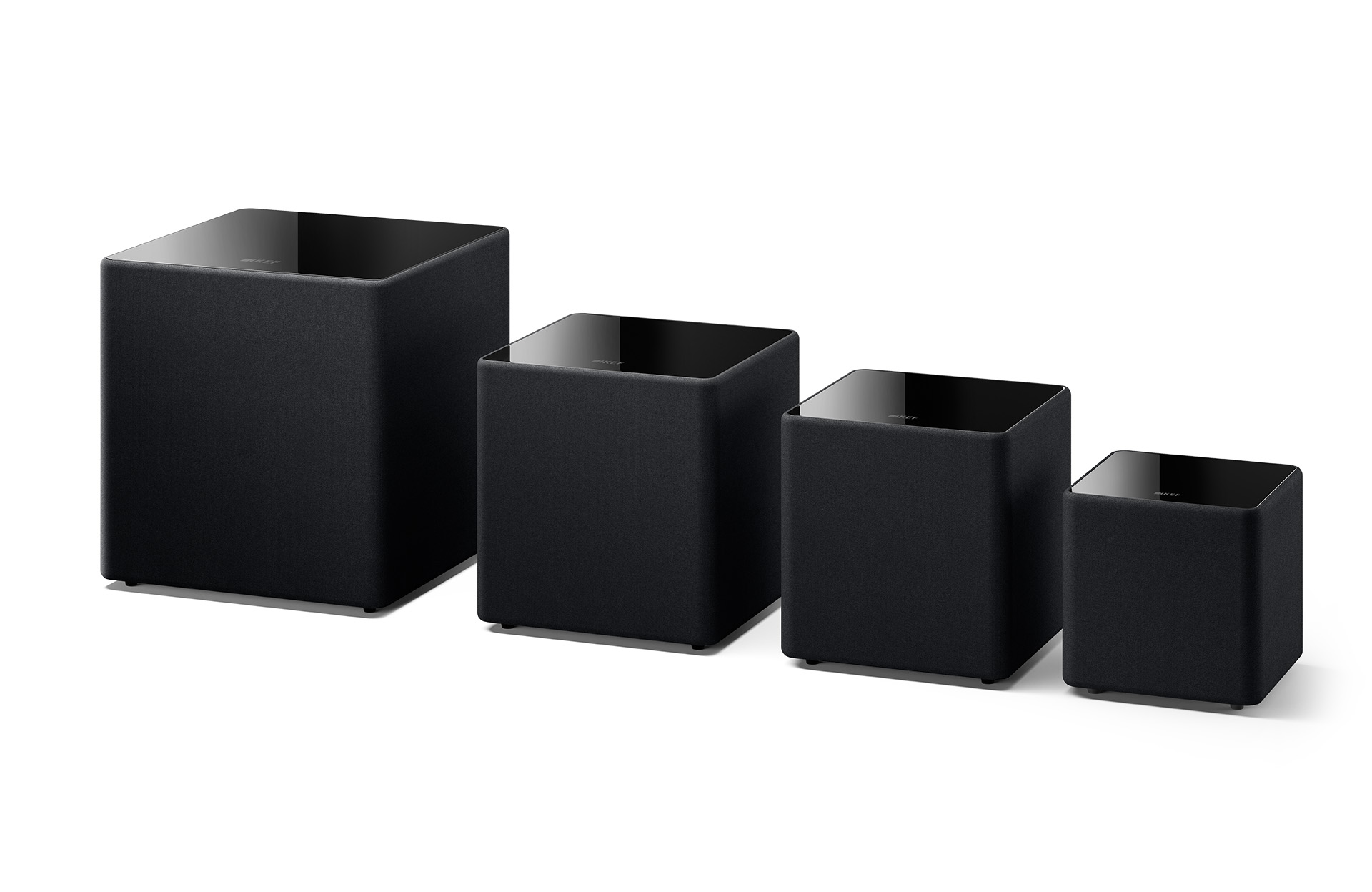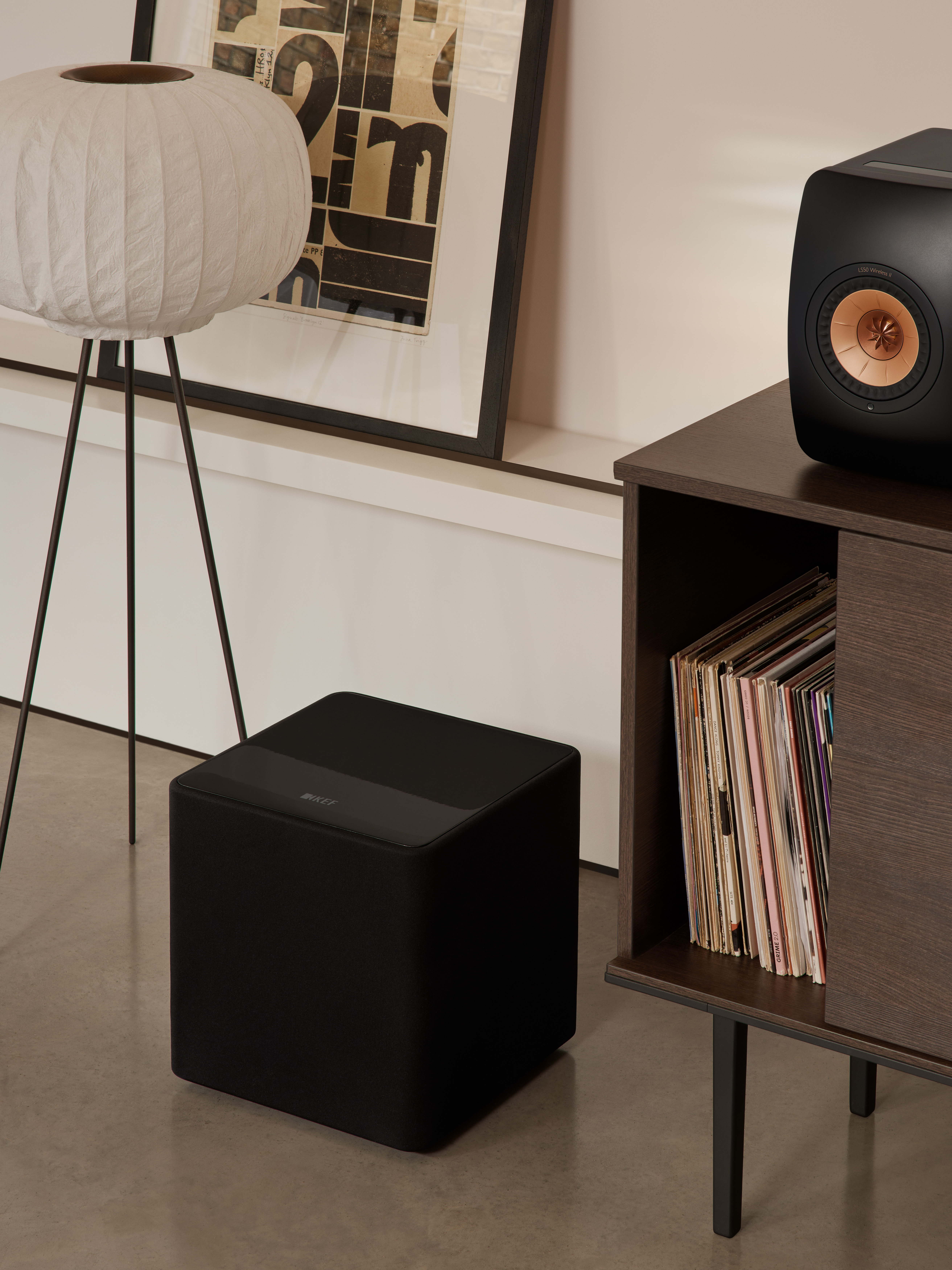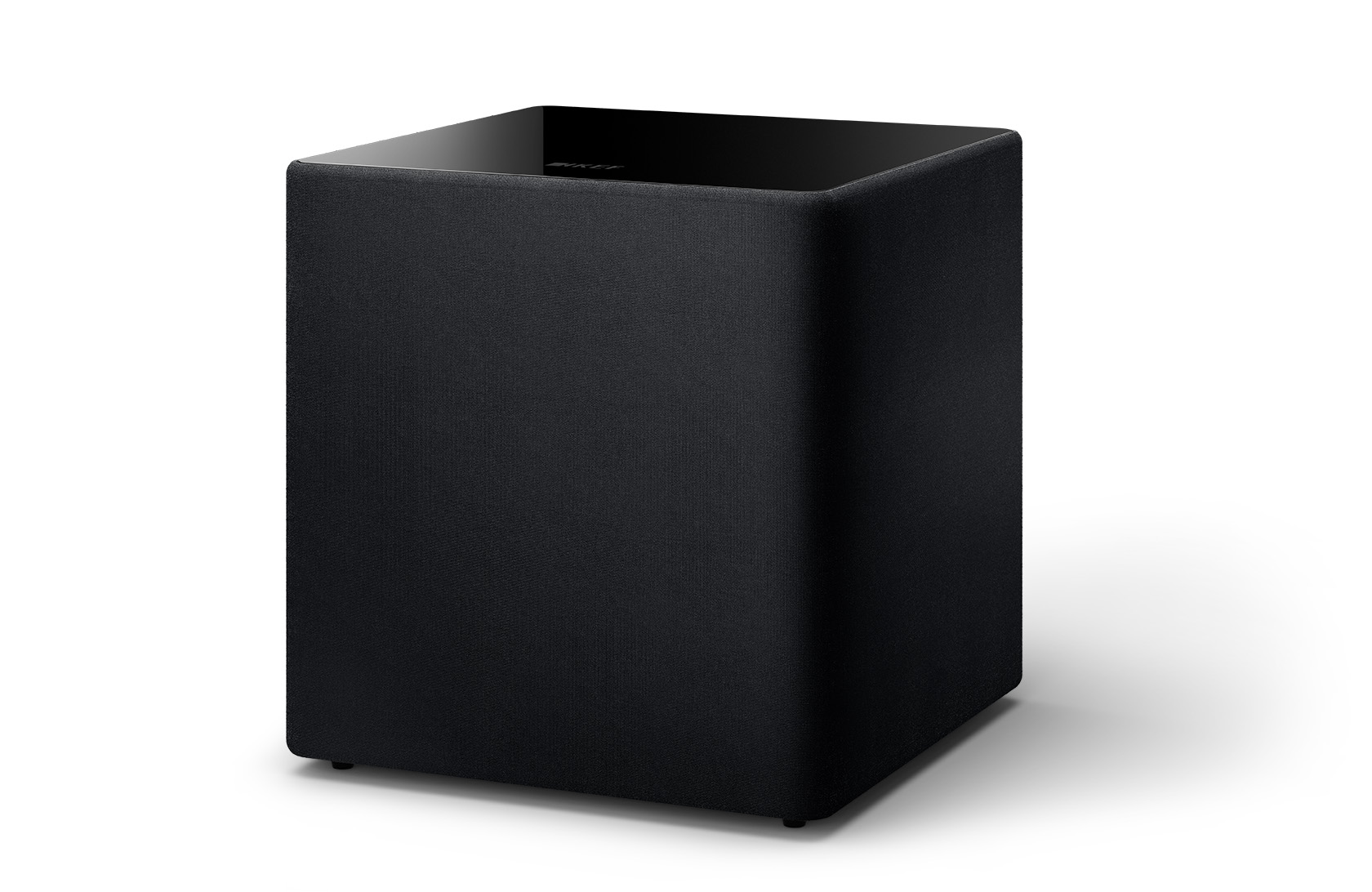Regardless of which subwoofer you own, there are three things to consider when placing it in your room. Obviously, you want to pick a subwoofer that is capable of chest-thumping movie soundtrack lows and the sweet nuance your favorite music deserves – and yes, a quality subwoofer that is well-engineered will be capable of both, so we’ll assume you bought a sub that checks both those boxes, but the three considerations (in no particular order) are:
There are two things great subwoofers and cheap subwoofers have in common: If they’re not dialed in and placed properly in your listening environment, they’ll both sound bad.
There is a way you can vastly improve the performance of your sub or subs, regardless of what product you picked. The only investment you need to make is a subwoofer cable long enough to allow you to place your sub in your main listening position(s) (MLP) and some time and patience. We also recommend having someone take pictures of you doing the subwoofer crawl and posting them on your social media accounts just for fun, but that part is optional.
- Location
- Location
- Location
There are two things great subwoofers and cheap subwoofers have in common: If they’re not dialed in and placed properly in your listening environment, they’ll both sound bad.
There is a way you can vastly improve the performance of your sub or subs, regardless of what product you picked. The only investment you need to make is a subwoofer cable long enough to allow you to place your sub in your main listening position(s) (MLP) and some time and patience. We also recommend having someone take pictures of you doing the subwoofer crawl and posting them on your social media accounts just for fun, but that part is optional.


What’s the Problem?
Without getting unnecessarily technical, audio waves in a room act like waves of water. Sound reflections bounce around the room, eventually meeting each other and the direct sound being produced by the subwoofer. Some frequencies may build up, causing an artificial boost in volume while other frequencies may destructively interfere with each other, causing a noticeable diminishment of perceived output. These issues are location dependent, meaning that certain frequencies may be out of balance at one location in your room, while other frequencies may be out of balance at other locations. Literally, your subwoofer may sound great where you are sitting while the person sitting next to you is wondering what you’re raving about because they’re getting no bass at all. If the balance is out of whack in an area where no one sits, then it’s no big deal, but if the balance is out where you sit, you’re going to be disappointed in your subwoofer’s performance – even though the subwoofer is probably doing a great job producing bass.
Without getting unnecessarily technical, audio waves in a room act like waves of water. Sound reflections bounce around the room, eventually meeting each other and the direct sound being produced by the subwoofer. Some frequencies may build up, causing an artificial boost in volume while other frequencies may destructively interfere with each other, causing a noticeable diminishment of perceived output. These issues are location dependent, meaning that certain frequencies may be out of balance at one location in your room, while other frequencies may be out of balance at other locations. Literally, your subwoofer may sound great where you are sitting while the person sitting next to you is wondering what you’re raving about because they’re getting no bass at all. If the balance is out of whack in an area where no one sits, then it’s no big deal, but if the balance is out where you sit, you’re going to be disappointed in your subwoofer’s performance – even though the subwoofer is probably doing a great job producing bass.
Do the Subwoofer Crawl
Get yourself a cable long enough to connect your sub to your receiver and place the sub in your Main Listening Position (MLP). For best results you can also do the subwoofer crawl for each priority seat in the listening room.
Place the subwoofer where you sit and play a bass-heavy track. Definitely pick a track you won’t get tired of because to do the subwoofer crawl correctly you’re going to listen to the same track for the entire procedure! Although there will be a difference in height between where your ears are when you sit and where the subwoofer driver is when you place it on your seat, the differences should be minor. However, if you want to go all in on your pursuit of sonic perfection mount the subwoofer so the drivers are relatively the same height your ears will be. This level of detail gets a bit wonky and be sure to protect your sub from toppling over, but it can make a difference.
Now crawl! Start in the obvious areas where you hope to place your subwoofer, but don’t be surprised when the center of the room becomes the best sounding spot (more on that later). As you crawl, stop and listen carefully, noticing volume, depth, punchiness and definition. Go back and forth between spots to notice the differences. Don’t worry too much because optimal spots will be pretty easy to notice, but you’ll also want to detect subtle differences in nuance as well.
Get yourself a cable long enough to connect your sub to your receiver and place the sub in your Main Listening Position (MLP). For best results you can also do the subwoofer crawl for each priority seat in the listening room.
Place the subwoofer where you sit and play a bass-heavy track. Definitely pick a track you won’t get tired of because to do the subwoofer crawl correctly you’re going to listen to the same track for the entire procedure! Although there will be a difference in height between where your ears are when you sit and where the subwoofer driver is when you place it on your seat, the differences should be minor. However, if you want to go all in on your pursuit of sonic perfection mount the subwoofer so the drivers are relatively the same height your ears will be. This level of detail gets a bit wonky and be sure to protect your sub from toppling over, but it can make a difference.
Now crawl! Start in the obvious areas where you hope to place your subwoofer, but don’t be surprised when the center of the room becomes the best sounding spot (more on that later). As you crawl, stop and listen carefully, noticing volume, depth, punchiness and definition. Go back and forth between spots to notice the differences. Don’t worry too much because optimal spots will be pretty easy to notice, but you’ll also want to detect subtle differences in nuance as well.
- Crawl, don’t’ walk. When you stand you’ll be off-axis and the sound will be different. The sub is going on the floor so that’s where your ears need to be
- When you find a spot that sounds like what you what from your subwoofer, mark it with tape
- You may find multiple spots
- Don’t be afraid to make several passes. The more you concentrate on the details, the happier you will be with your subwoofer performance


Sometimes the best sounding spot is right in the center of the room. If this happens, you have two choices: Put your subwoofer in the center of the room and be prepared to explain that to your significant other and your guests, or find the next best spot that also happens to be in a visually aesthetic place and live with the compromise. There are also some tweaks and tricks you can do to make a semi-optimal spot sound almost as good as an optimal spot. We’ll cover those in future posts.
If your system has multiple subs, repeat the procedure for each sub. Only run the sub you are doing the subwoofer crawl for at first, but once you’ve selected a spot for each subsequent sub, turn the previously placed sub or subs on and make sure everything is sounding good at your MLP. If you notice an artificial bump or dip in response, you may have to tweak the angular relationships between subs (as opposed to moving them completely). Sometimes just a small change in relative angle between drivers or to the MLP can make a world of difference.
If your system has multiple subs, repeat the procedure for each sub. Only run the sub you are doing the subwoofer crawl for at first, but once you’ve selected a spot for each subsequent sub, turn the previously placed sub or subs on and make sure everything is sounding good at your MLP. If you notice an artificial bump or dip in response, you may have to tweak the angular relationships between subs (as opposed to moving them completely). Sometimes just a small change in relative angle between drivers or to the MLP can make a world of difference.
Okay. Now What?
Once you’re satisfied with your subwoofer placement it’s time to do some detailed adjusting – it’s time to dial your subs in. Hopefully you’re not tired of that track yet, but if you are, switch to another bass-heavy track you can listen to over and over again during the dialing in phase.
Start by adjusting the crossover setting. There are tools that can do this for you, but at the end of the day all that matters is what you hear. You can use the tools to get you close, but for optimal results trust your ears, they will tell you what you like and what you don’t like better than any algorithm. We’ll cover the details of crossover setup in a following post, but for now, don’t be afraid to experiment. Start high and go low, start low and go high and trust your ears along the way.
After you are satisfied with the crossover setting, it’s time to dial in the sub gain. Be ready, dialing in the sub gain may force you to go back and adjust your crossover setting but don’t worry, with each step you’re getting closer and closer to amazing subwoofer performance. A properly tuned subwoofer will not draw your attention but will instead just give you a satisfying sense of deep bass. If your eyes or ears are drawn to the subwoofer it’ probably too loud. You may want it super loud, and after all it is your subwoofer, but remember that an improperly tuned subwoofer affects the other frequencies all the way up to the top of the listening band.
Now go! Crawl around and listen!
Once you’re satisfied with your subwoofer placement it’s time to do some detailed adjusting – it’s time to dial your subs in. Hopefully you’re not tired of that track yet, but if you are, switch to another bass-heavy track you can listen to over and over again during the dialing in phase.
Start by adjusting the crossover setting. There are tools that can do this for you, but at the end of the day all that matters is what you hear. You can use the tools to get you close, but for optimal results trust your ears, they will tell you what you like and what you don’t like better than any algorithm. We’ll cover the details of crossover setup in a following post, but for now, don’t be afraid to experiment. Start high and go low, start low and go high and trust your ears along the way.
After you are satisfied with the crossover setting, it’s time to dial in the sub gain. Be ready, dialing in the sub gain may force you to go back and adjust your crossover setting but don’t worry, with each step you’re getting closer and closer to amazing subwoofer performance. A properly tuned subwoofer will not draw your attention but will instead just give you a satisfying sense of deep bass. If your eyes or ears are drawn to the subwoofer it’ probably too loud. You may want it super loud, and after all it is your subwoofer, but remember that an improperly tuned subwoofer affects the other frequencies all the way up to the top of the listening band.
Now go! Crawl around and listen!

By Jack Sharkey for KEF

























































































